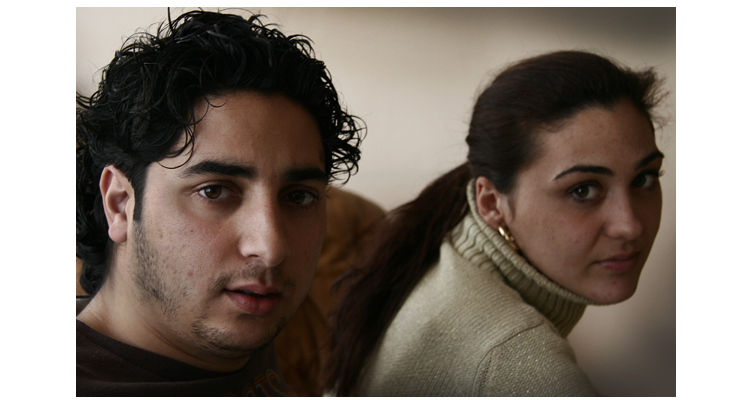

Pareja
Jesús Ciscar
Archivo Jesús Ciscar

Se calcula que alrededor del 40% de la población gitana española se encuentra entre los 14 y los 30 años, es la generación con mayor potencial de cambio y transformación de la historia de la comunidad gitana en España. Son los gitanos del siglo XXI que se enfrentan al reto de definir su identidad cultural y proyectar su gitaneidad en un mundo al que pertenecen pero al que aún pueden parecer extraños.
En la escuela, en su acceso a las nuevas tecnologías, en su relación con sus amigos, comparten los hábitos y las preocupaciones del resto de jóvenes españoles. Y no son ajenos a las nuevas tendencias estéticas y musicales a ritmo de hip-hop. Sin embargo, un gran número de gitanos y gitanas jóvenes en situación de exclusión o desventaja social, han tenido escasa presencia real tanto en las políticas de juventud como en los espacios habituales de participación juvenil.
It is estimated that some 40% of Spain's Romani population is aged between 14 and 30, a generation with greater potential to change and transform the history of the Romani community in Spain than any of their predecessors. These are the Romani of the 21st century who face the challenge of defining their cultural identity and projecting their Romani essence onto a world to which they belong but to which they may still seem like outsiders.
At school, in their access to new technologies, their relationships with their friends, they share the habits and concerns of all other Spanish youngsters. Nor are they unaffected by the latest fashions and musical trends played out to a hip-hop soundtrack. Nonetheless, many Romani youngsters find themselves in a situation of exclusion or social disadvantage, and they have enjoyed little real presence in youth policy or in the traditional forums for youth participation.
Se calcula que alrededor del 40% de la población gitana española se encuentra entre los 14 y los 30 años, es la generación con mayor potencial de cambio y transformación de la historia de la comunidad gitana en España. Son los gitanos del siglo XXI que se enfrentan al reto de definir su identidad cultural y proyectar su gitaneidad en un mundo al que pertenecen pero al que aún pueden parecer extraños.
En la escuela, en su acceso a las nuevas tecnologías, en su relación con sus amigos, comparten los hábitos y las preocupaciones del resto de jóvenes españoles. Y no son ajenos a las nuevas tendencias estéticas y musicales a ritmo de hip-hop. Sin embargo, un gran número de gitanos y gitanas jóvenes en situación de exclusión o desventaja social, han tenido escasa presencia real tanto en las políticas de juventud como en los espacios habituales de participación juvenil.
It is estimated that some 40% of Spain's Romani population is aged between 14 and 30, a generation with greater potential to change and transform the history of the Romani community in Spain than any of their predecessors. These are the Romani of the 21st century who face the challenge of defining their cultural identity and projecting their Romani essence onto a world to which they belong but to which they may still seem like outsiders.
At school, in their access to new technologies, their relationships with their friends, they share the habits and concerns of all other Spanish youngsters. Nor are they unaffected by the latest fashions and musical trends played out to a hip-hop soundtrack. Nonetheless, many Romani youngsters find themselves in a situation of exclusion or social disadvantage, and they have enjoyed little real presence in youth policy or in the traditional forums for youth participation.